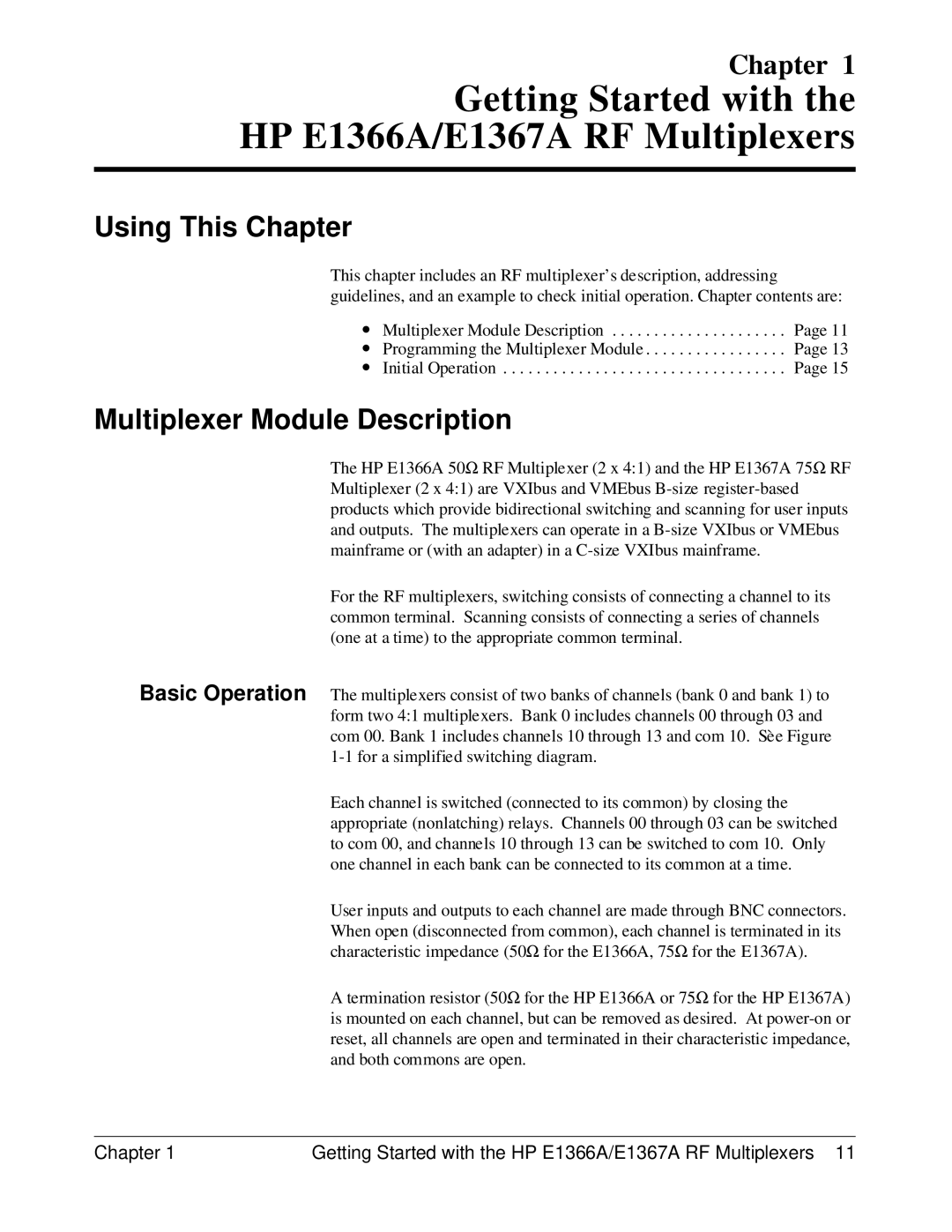
Chapter 1
Getting Started with the HP E1366A/E1367A RF Multiplexers
Using This Chapter
This chapter includes an RF multiplexer’s description, addressing guidelines, and an example to check initial operation. Chapter contents are:
∙Multiplexer Module Description . . . . . . . . . . . . . . . . . . . . . Page 11
∙Programming the Multiplexer Module . . . . . . . . . . . . . . . . . Page 13
∙Initial Operation . . . . . . . . . . . . . . . . . . . . . . . . . . . . . . . . . . Page 15
Multiplexer Module Description
The HP E1366A 50Ω RF Multiplexer (2 x 4:1) and the HP E1367A 75Ω RF Multiplexer (2 x 4:1) are VXIbus and VMEbus
For the RF multiplexers, switching consists of connecting a channel to its common terminal. Scanning consists of connecting a series of channels (one at a time) to the appropriate common terminal.
Basic Operation The multiplexers consist of two banks of channels (bank 0 and bank 1) to form two 4:1 multiplexers. Bank 0 includes channels 00 through 03 and com 00. Bank 1 includes channels 10 through 13 and com 10. S`ee Figure
Each channel is switched (connected to its common) by closing the appropriate (nonlatching) relays. Channels 00 through 03 can be switched to com 00, and channels 10 through 13 can be switched to com 10. Only one channel in each bank can be connected to its common at a time.
User inputs and outputs to each channel are made through BNC connectors. When open (disconnected from common), each channel is terminated in its characteristic impedance (50Ω for the E1366A, 75Ω for the E1367A).
A termination resistor (50Ω for the HP E1366A or 75Ω for the HP E1367A) is mounted on each channel, but can be removed as desired. At
Chapter 1 | Getting Started with the HP E1366A/E1367A RF Multiplexers 11 |
